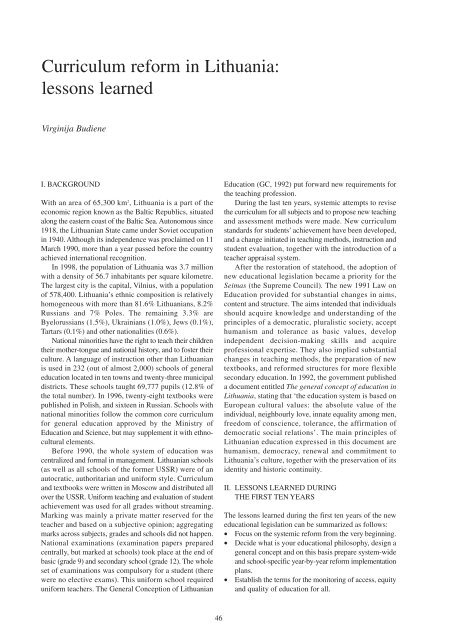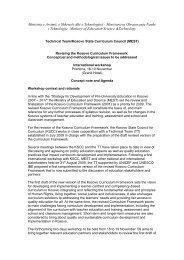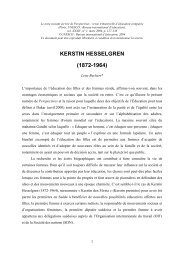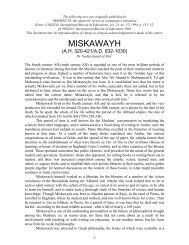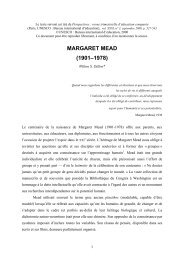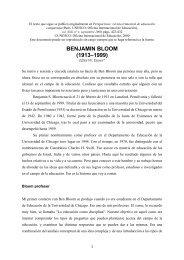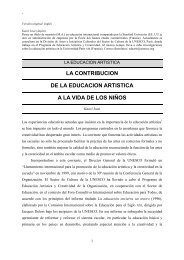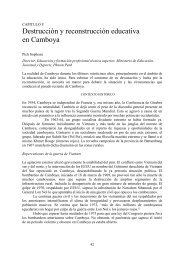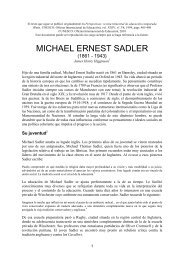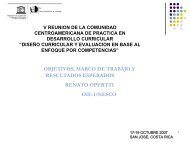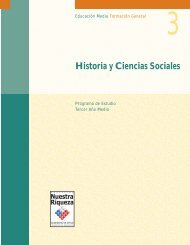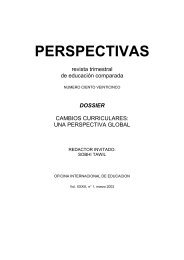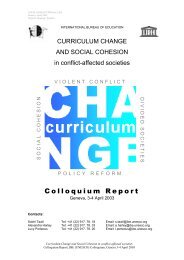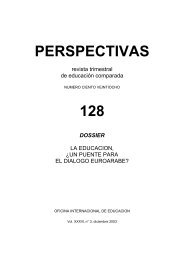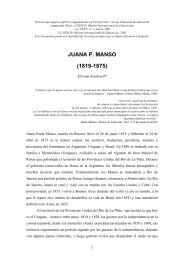Curriculum Change and Social Inclusion - International Bureau of ...
Curriculum Change and Social Inclusion - International Bureau of ...
Curriculum Change and Social Inclusion - International Bureau of ...
Create successful ePaper yourself
Turn your PDF publications into a flip-book with our unique Google optimized e-Paper software.
<strong>Curriculum</strong> reform in Lithuania:<br />
lessons learned<br />
Virginija Budiene<br />
I. BACKGROUND<br />
With an area <strong>of</strong> 65,300 km 2 , Lithuania is a part <strong>of</strong> the<br />
economic region known as the Baltic Republics, situated<br />
along the eastern coast <strong>of</strong> the Baltic Sea. Autonomous since<br />
1918, the Lithuanian State came under Soviet occupation<br />
in 1940. Although its independence was proclaimed on 11<br />
March 1990, more than a year passed before the country<br />
achieved international recognition.<br />
In 1998, the population <strong>of</strong> Lithuania was 3.7 million<br />
with a density <strong>of</strong> 56.7 inhabitants per square kilometre.<br />
The largest city is the capital, Vilnius, with a population<br />
<strong>of</strong> 578,400. Lithuania’s ethnic composition is relatively<br />
homogeneous with more than 81.6% Lithuanians, 8.2%<br />
Russians <strong>and</strong> 7% Poles. The remaining 3.3% are<br />
Byelorussians (1.5%), Ukrainians (1.0%), Jews (0.1%),<br />
Tartars (0.1%) <strong>and</strong> other nationalities (0.6%).<br />
National minorities have the right to teach their children<br />
their mother-tongue <strong>and</strong> national history, <strong>and</strong> to foster their<br />
culture. A language <strong>of</strong> instruction other than Lithuanian<br />
is used in 232 (out <strong>of</strong> almost 2,000) schools <strong>of</strong> general<br />
education located in ten towns <strong>and</strong> twenty-three municipal<br />
districts. These schools taught 69,777 pupils (12.8% <strong>of</strong><br />
the total number). In 1996, twenty-eight textbooks were<br />
published in Polish, <strong>and</strong> sixteen in Russian. Schools with<br />
national minorities follow the common core curriculum<br />
for general education approved by the Ministry <strong>of</strong><br />
Education <strong>and</strong> Science, but may supplement it with ethnocultural<br />
elements.<br />
Before 1990, the whole system <strong>of</strong> education was<br />
centralized <strong>and</strong> formal in management. Lithuanian schools<br />
(as well as all schools <strong>of</strong> the former USSR) were <strong>of</strong> an<br />
autocratic, authoritarian <strong>and</strong> uniform style. <strong>Curriculum</strong><br />
<strong>and</strong> textbooks were written in Moscow <strong>and</strong> distributed all<br />
over the USSR. Uniform teaching <strong>and</strong> evaluation <strong>of</strong> student<br />
achievement was used for all grades without streaming.<br />
Marking was mainly a private matter reserved for the<br />
teacher <strong>and</strong> based on a subjective opinion; aggregating<br />
marks across subjects, grades <strong>and</strong> schools did not happen.<br />
National examinations (examination papers prepared<br />
centrally, but marked at schools) took place at the end <strong>of</strong><br />
basic (grade 9) <strong>and</strong> secondary school (grade 12). The whole<br />
set <strong>of</strong> examinations was compulsory for a student (there<br />
were no elective exams). This uniform school required<br />
uniform teachers. The General Conception <strong>of</strong> Lithuanian<br />
46<br />
Education (GC, 1992) put forward new requirements for<br />
the teaching pr<strong>of</strong>ession.<br />
During the last ten years, systemic attempts to revise<br />
the curriculum for all subjects <strong>and</strong> to propose new teaching<br />
<strong>and</strong> assessment methods were made. New curriculum<br />
st<strong>and</strong>ards for students’ achievement have been developed,<br />
<strong>and</strong> a change initiated in teaching methods, instruction <strong>and</strong><br />
student evaluation, together with the introduction <strong>of</strong> a<br />
teacher appraisal system.<br />
After the restoration <strong>of</strong> statehood, the adoption <strong>of</strong><br />
new educational legislation became a priority for the<br />
Seimas (the Supreme Council). The new 1991 Law on<br />
Education provided for substantial changes in aims,<br />
content <strong>and</strong> structure. The aims intended that individuals<br />
should acquire knowledge <strong>and</strong> underst<strong>and</strong>ing <strong>of</strong> the<br />
principles <strong>of</strong> a democratic, pluralistic society, accept<br />
humanism <strong>and</strong> tolerance as basic values, develop<br />
independent decision-making skills <strong>and</strong> acquire<br />
pr<strong>of</strong>essional expertise. They also implied substantial<br />
changes in teaching methods, the preparation <strong>of</strong> new<br />
textbooks, <strong>and</strong> reformed structures for more flexible<br />
secondary education. In 1992, the government published<br />
a document entitled The general concept <strong>of</strong> education in<br />
Lithuania, stating that ‘the education system is based on<br />
European cultural values: the absolute value <strong>of</strong> the<br />
individual, neighbourly love, innate equality among men,<br />
freedom <strong>of</strong> conscience, tolerance, the affirmation <strong>of</strong><br />
democratic social relations’. The main principles <strong>of</strong><br />
Lithuanian education expressed in this document are<br />
humanism, democracy, renewal <strong>and</strong> commitment to<br />
Lithuania’s culture, together with the preservation <strong>of</strong> its<br />
identity <strong>and</strong> historic continuity.<br />
II. LESSONS LEARNED DURING<br />
THE FIRST TEN YEARS<br />
The lessons learned during the first ten years <strong>of</strong> the new<br />
educational legislation can be summarized as follows:<br />
• Focus on the systemic reform from the very beginning.<br />
• Decide what is your educational philosophy, design a<br />
general concept <strong>and</strong> on this basis prepare system-wide<br />
<strong>and</strong> school-specific year-by-year reform implementation<br />
plans.<br />
• Establish the terms for the monitoring <strong>of</strong> access, equity<br />
<strong>and</strong> quality <strong>of</strong> education for all.


